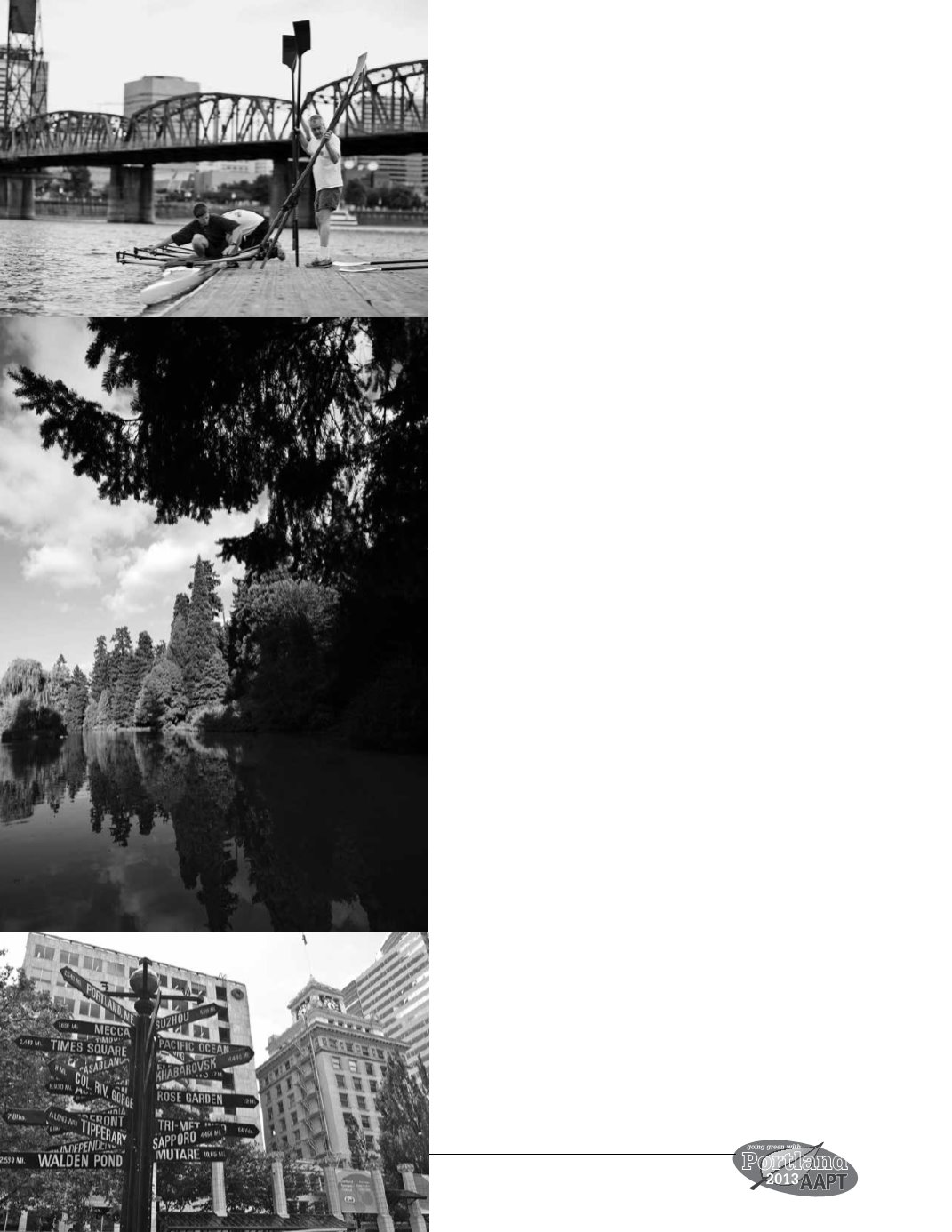
8
Portland
Portland – the “City of
Roses”
P
ortland has been called the most environmentally friendly
or “green” city in the United States. Known especially for
its many rose gardens—the most famous one is the Interna-
tional Rose Test Garden, Portland lies at the northern end
of the Willamette Valley. The Willamette River runs north
through the city center, separating the east and west sections
before veering northwest to join with the Columbia River at
the Washington state border.
History
The city of Portland was founded in 1843 on the Willamette
River in what was then called “Oregon Country.” In 1845 the
name of Portland was chosen and on Feb. 8, 1851, the city was
incorporated. Portland actually started as a spot known as “the
clearing.” The city was named for Portland, ME, after a famous
coin toss. In 1843 the two owners of the claim, Asa Lovejoy
of Boston and Francis W. Pettygrove of Portland, ME, each
wanted to name the new city after his respective home town;
thus the coin toss, which Pettygrove and Portland, ME, won.
At the time of its incorporation in 1851, Portland had more
than 800 inhabitants, a steam sawmill, a log cabin hotel, and a
newspaper, the Weekly
Oregonian
.
In 1905, Portland was the host city of the Lewis and Clark Cen-
tennial Exposition. This event contributed to a doubling of the
population, from 90,426 in 1900 to 207,214 in 1910.
Portland’s location, with access to the Pacific Ocean via the
Willamette and the Columbia rivers, and access to the agricul-
tural Tualatin Valley via the “Great Plank Road” (the route of
current-day U.S. Route 26), gave it an advantage over nearby
ports. It remained the major port in the Pacific Northwest for
much of the 19th century, until the 1890s, when Seattle’s deep-
water harbor was connected to the rest of the mainland by rail,
affording an inland route without the treacherous navigation of
the Columbia River.
Education
The largest institutions of higher education include Portland
Community College, Portland State University, and Oregon
Health & Science University. Private colleges and universities
include Lewis & Clark College, Reed College, Warner Pacific
College, Linfield College, and Concordia University.


